-
 Bitcoin
Bitcoin $116400
-1.69% -
 Ethereum
Ethereum $3731
2.87% -
 XRP
XRP $3.119
-1.00% -
 Tether USDt
Tether USDt $1.000
-0.04% -
 BNB
BNB $774.0
1.01% -
 Solana
Solana $181.0
-2.25% -
 USDC
USDC $1.000
0.02% -
 Dogecoin
Dogecoin $0.2314
-2.16% -
 TRON
TRON $0.3145
1.76% -
 Cardano
Cardano $0.8087
0.22% -
 Hyperliquid
Hyperliquid $43.01
0.68% -
 Stellar
Stellar $0.4247
-0.93% -
 Sui
Sui $3.758
1.42% -
 Chainlink
Chainlink $18.30
1.99% -
 Bitcoin Cash
Bitcoin Cash $551.4
5.66% -
 Hedera
Hedera $0.2482
3.08% -
 Avalanche
Avalanche $23.70
0.18% -
 Litecoin
Litecoin $115.1
2.44% -
 UNUS SED LEO
UNUS SED LEO $8.972
-0.36% -
 Shiba Inu
Shiba Inu $0.00001370
0.73% -
 Toncoin
Toncoin $3.146
0.74% -
 Ethena USDe
Ethena USDe $1.001
-0.03% -
 Uniswap
Uniswap $10.49
3.95% -
 Polkadot
Polkadot $4.044
1.42% -
 Monero
Monero $328.9
2.43% -
 Dai
Dai $0.9998
-0.03% -
 Bitget Token
Bitget Token $4.510
-1.10% -
 Pepe
Pepe $0.00001231
-1.68% -
 Aave
Aave $293.4
2.16% -
 Cronos
Cronos $0.1294
2.89%
How to confirm the downward trend of 4-hour MACD dead cross + 1-hour moving average short arrangement?
A 4-hour MACD dead cross below zero, confirmed by a 1-hour bearish EMA stack (9 < 21 < 50), signals strong downside momentum in crypto trends.
Jul 24, 2025 at 03:42 am
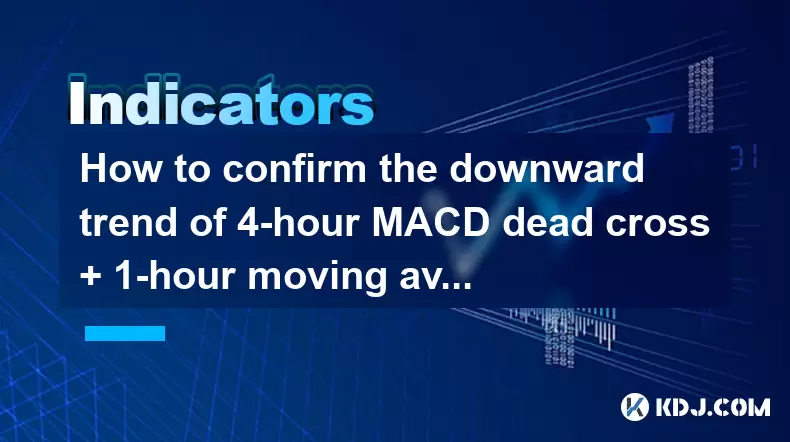
Understanding the 4-Hour MACD Dead Cross
The MACD (Moving Average Convergence Divergence) is a momentum indicator widely used in cryptocurrency trading to identify potential trend reversals. A dead cross occurs when the MACD line (typically the 12-period EMA minus the 26-period EMA) crosses below the signal line (9-period EMA of the MACD line). On the 4-hour chart, this signal indicates weakening bullish momentum and the possible start of a bearish trend.
To confirm a MACD dead cross on the 4-hour timeframe, traders must ensure the following conditions are met:
- The MACD line crosses below the signal line after being above it.
- This crossover happens below the zero line, which strengthens the bearish signal.
- There is a noticeable decline in volume or lack of buying pressure following the cross.
- The price is trading below key moving averages such as the 50-period and 200-period EMA on the 4-hour chart.
It’s essential to avoid acting on a single crossover without confirmation. False signals are common in volatile crypto markets. Therefore, waiting for the candle to close below the signal line ensures the signal is valid and not a temporary fluctuation.
Analyzing the 1-Hour Moving Average Short Arrangement
After identifying a bearish signal on the 4-hour chart, the next step is confirming it on a lower timeframe. The 1-hour chart provides finer detail and helps traders time their entries. A moving average short arrangement refers to a configuration where shorter-term moving averages are positioned below longer-term ones, indicating a downtrend.
To spot this arrangement:
- Plot the 9 EMA, 21 EMA, and 50 EMA on the 1-hour chart.
- Confirm that the 9 EMA is below the 21 EMA, and the 21 EMA is below the 50 EMA.
- Observe whether the price is consistently making lower highs and lower lows.
- Ensure the price is trading below all three moving averages, reinforcing the bearish bias.
This descending order of EMAs acts as dynamic resistance. Each retest of these averages that fails to break above strengthens the likelihood of continued downward movement. Traders should also watch for bearish candlestick patterns like engulfing candles or shooting stars near these moving averages.
Correlating the Two Timeframes for Confirmation
Combining signals from multiple timeframes increases the reliability of a trade setup. When the 4-hour MACD shows a dead cross and the 1-hour chart displays a short moving average arrangement, the probability of a sustained downtrend rises significantly.
To validate the alignment:
- Ensure the 4-hour dead cross occurred before or simultaneously with the 1-hour MA arrangement.
- Check that the price on the 1-hour chart is respecting the bearish structure formed after the 4-hour signal.
- Look for increasing volume on down candles, which confirms selling pressure.
- Avoid entering trades if the 1-hour chart shows bullish divergence or a MACD reversal above the signal line.
This multi-timeframe confluence prevents premature entries during market consolidations. It also filters out noise, especially in cryptocurrencies like Bitcoin or Ethereum, where short-term volatility can create misleading signals.
Executing a Trade Based on the Signal
Once both conditions are confirmed, traders can plan a short entry. The following steps outline a precise execution strategy:
- Wait for a retest of a descending EMA cluster on the 1-hour chart (e.g., 9, 21, 50 EMAs).
- Place a short entry order if price rejection occurs, confirmed by a bearish candle closing below the EMAs.
- Set a stop-loss slightly above the most recent swing high or above the 50 EMA to manage risk.
- Use a take-profit level aligned with previous support zones or Fibonacci retracement levels (e.g., 61.8% or 78.6%).
For example, if BTC/USDT shows a 4-hour MACD dead cross and the 1-hour chart reveals a short MA stack, a short position can be initiated when price fails to reclaim the 21 EMA. The stop-loss is placed at the recent high, and profit targets are set at known liquidity zones.
Using trailing stops can help lock in profits if the downtrend accelerates. Always monitor for news events or exchange outages that may disrupt technical patterns.
Monitoring Additional Confirmation Indicators
To further strengthen the bearish thesis, traders should incorporate supplementary indicators:
- RSI (Relative Strength Index): A reading below 30 on the 1-hour chart may indicate oversold conditions, but in a strong downtrend, RSI can remain low for extended periods. Look for RSI failing to break above 50 after a bounce.
- Volume Profile: Declining volume during pullbacks and surging volume on down moves confirm bearish control.
- Order Book Analysis: Observe growing ask-side liquidity on exchanges, indicating more sellers waiting at higher prices.
- Funding Rates: In perpetual futures markets, negative funding rates suggest a bearish sentiment among leveraged traders.
These tools help distinguish between a true downtrend and a temporary correction. For instance, if funding rates are deeply negative and the order book shows strong resistance, the probability of continuation increases.
Frequently Asked Questions
Q: Can the MACD dead cross occur above the zero line and still be bearish?
Yes, a MACD dead cross above the zero line can still signal a bearish shift, especially if it follows a prolonged rally. However, it's less reliable than a cross below zero. Traders should wait for the price to break below key support levels or for the 1-hour MA arrangement to form before acting.
Q: What EMAs are most effective for the 1-hour short arrangement?
The 9 EMA, 21 EMA, and 50 EMA are widely used due to their responsiveness and clarity in trend identification. The 9 captures short-term momentum, the 21 reflects intermediate trends, and the 50 acts as a baseline. Their descending order confirms bearish alignment.
Q: How long should I wait for confirmation after the 4-hour MACD dead cross?
Wait for at least one full 4-hour candle to close after the cross. Then check the 1-hour chart for MA arrangement and price action. Rushing in before confirmation increases the risk of false signals, especially during low-liquidity periods.
Q: Does this strategy work on all cryptocurrencies?
It works best on high-liquidity pairs like BTC/USDT, ETH/USDT, or BNB/USDT. Low-cap altcoins often exhibit erratic price movements and thin order books, making technical signals less reliable. Always assess the asset’s volatility and trading volume before applying this method.
Disclaimer:info@kdj.com
The information provided is not trading advice. kdj.com does not assume any responsibility for any investments made based on the information provided in this article. Cryptocurrencies are highly volatile and it is highly recommended that you invest with caution after thorough research!
If you believe that the content used on this website infringes your copyright, please contact us immediately (info@kdj.com) and we will delete it promptly.
- Pump, Bonk, Buyback: A Wild Ride in Crypto Town!
- 2025-07-25 19:10:12
- Punisher Coin, Dogecoin, Shiba Inu: Meme Coin Mania in the 2025 Crypto Landscape
- 2025-07-25 19:10:12
- Celestia's Token Control: Buyback & Staking Overhaul in Focus
- 2025-07-25 19:50:11
- Altcoins, Bitcoin, and Crypto Coins: What's Hot in the NYC Crypto Scene?
- 2025-07-25 19:55:52
- Litecoin Price Breakout Imminent? Rally Potential Explored!
- 2025-07-25 17:30:12
- Ether ETFs Surge, Bitcoin Wobbles: Is an ETH Breakout Imminent?
- 2025-07-25 16:50:12
Related knowledge

How to interpret that the KDJ D line is downward for a long time but the price is sideways?
Jul 25,2025 at 07:00pm
Understanding the KDJ Indicator and Its ComponentsThe KDJ indicator is a momentum oscillator widely used in cryptocurrency trading to assess overbough...

What does it mean that the KDJ indicator forms a double bottom at a low level?
Jul 25,2025 at 05:08pm
Understanding the KDJ Indicator in Cryptocurrency TradingThe KDJ indicator is a momentum oscillator widely used in cryptocurrency trading to identify ...
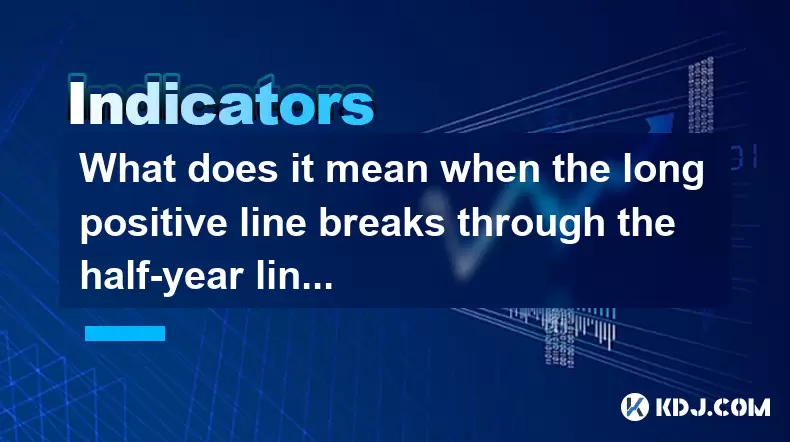
What does it mean when the long positive line breaks through the half-year line and then steps back?
Jul 25,2025 at 06:49pm
Understanding the Long Positive Line in Candlestick ChartsIn the world of cryptocurrency trading, candlestick patterns play a vital role in technical ...
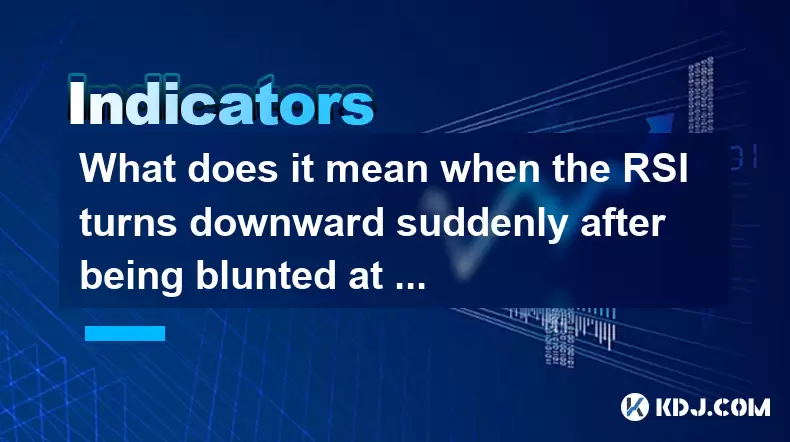
What does it mean when the RSI turns downward suddenly after being blunted at a high level?
Jul 25,2025 at 04:00pm
Understanding the RSI and Its Role in Technical AnalysisThe Relative Strength Index (RSI) is a momentum oscillator that measures the speed and change ...
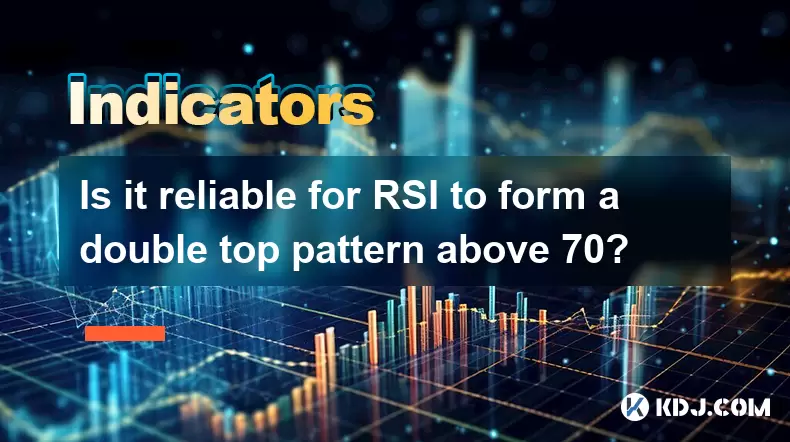
Is it reliable for RSI to form a double top pattern above 70?
Jul 25,2025 at 04:49pm
Understanding the RSI Indicator and Its Role in Technical AnalysisThe Relative Strength Index (RSI) is a momentum oscillator that measures the speed a...
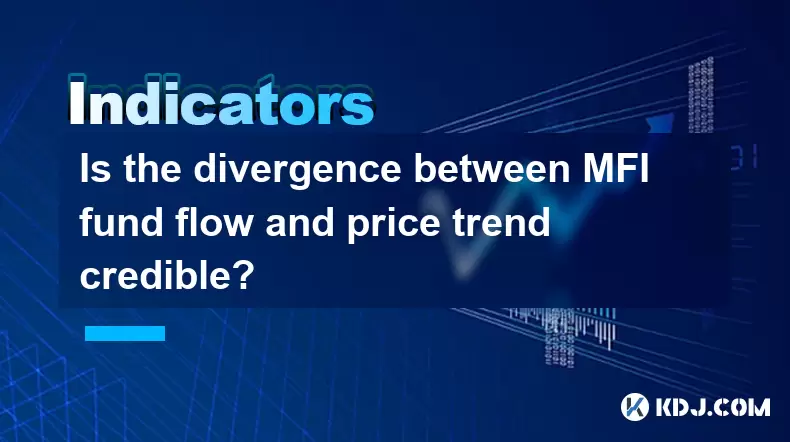
Is the divergence between MFI fund flow and price trend credible?
Jul 25,2025 at 12:01pm
Understanding MFI and Fund Flow in Cryptocurrency MarketsThe Money Flow Index (MFI) is a technical oscillator that combines price and volume to assess...

How to interpret that the KDJ D line is downward for a long time but the price is sideways?
Jul 25,2025 at 07:00pm
Understanding the KDJ Indicator and Its ComponentsThe KDJ indicator is a momentum oscillator widely used in cryptocurrency trading to assess overbough...

What does it mean that the KDJ indicator forms a double bottom at a low level?
Jul 25,2025 at 05:08pm
Understanding the KDJ Indicator in Cryptocurrency TradingThe KDJ indicator is a momentum oscillator widely used in cryptocurrency trading to identify ...

What does it mean when the long positive line breaks through the half-year line and then steps back?
Jul 25,2025 at 06:49pm
Understanding the Long Positive Line in Candlestick ChartsIn the world of cryptocurrency trading, candlestick patterns play a vital role in technical ...

What does it mean when the RSI turns downward suddenly after being blunted at a high level?
Jul 25,2025 at 04:00pm
Understanding the RSI and Its Role in Technical AnalysisThe Relative Strength Index (RSI) is a momentum oscillator that measures the speed and change ...

Is it reliable for RSI to form a double top pattern above 70?
Jul 25,2025 at 04:49pm
Understanding the RSI Indicator and Its Role in Technical AnalysisThe Relative Strength Index (RSI) is a momentum oscillator that measures the speed a...

Is the divergence between MFI fund flow and price trend credible?
Jul 25,2025 at 12:01pm
Understanding MFI and Fund Flow in Cryptocurrency MarketsThe Money Flow Index (MFI) is a technical oscillator that combines price and volume to assess...
See all articles

























































































